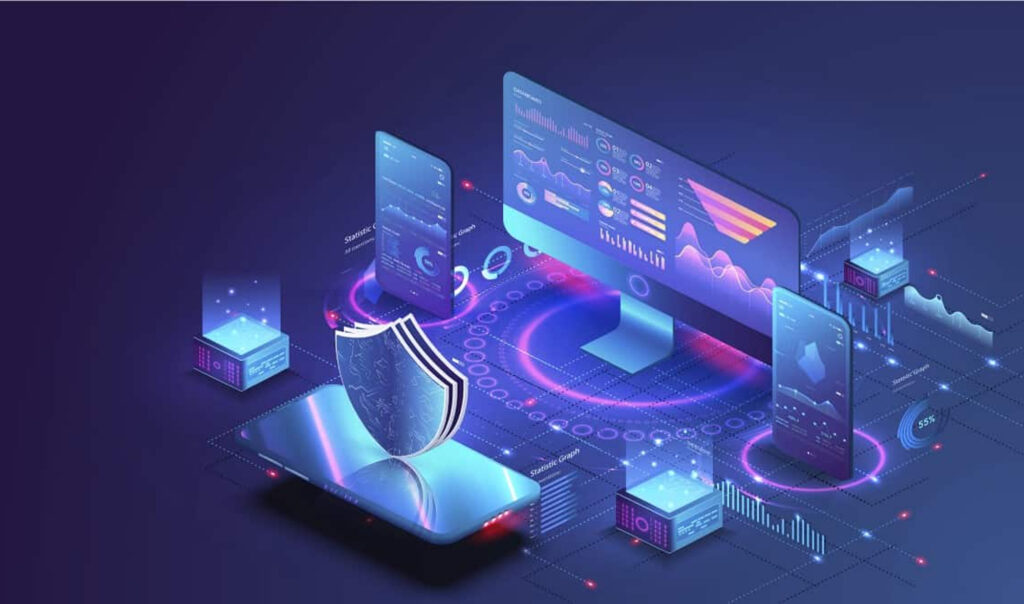
In today’s technology-driven world, web and app development is crucial for businesses and services. A Full Stack Developer is a highly sought-after professional who can handle all layers of software development — from the user interface to the database and server logic. This guide will help beginners understand what a full stack developer is, their skills, responsibilities, and how to become one in 2025.
1. What is a Full Stack Developer?
A Full Stack Developer is a software engineer who works on both the front-end (client side) and back-end (server side) of a web or mobile application. This means they can build a complete application from scratch, handling everything from the layout users interact with, to the business logic and database behind the scenes.
Front-End: The visual part of the application (buttons, layouts, animations).
Back-End: The server, database, and application logic that power the app behind the scenes.
2. Why Are Full Stack Developers Important in 2025?
With rapid digital transformation, companies want developers who can:
Deliver end-to-end solutions.
Work efficiently across multiple tech layers.
Communicate better with teams by understanding full project scope.
Save cost and time by reducing the need for multiple specialists.
Full stack developers provide flexibility and adaptability in an evolving tech landscape.
3. Key Skills of a Full Stack Developer
Front-End Skills:
HTML/CSS: Markup and styling for web pages.
JavaScript: Adds interactivity and dynamic behavior.
Modern Frameworks: React.js, Vue.js, Angular, Svelte.
Responsive Design: Making apps work on mobile and desktop.
Back-End Skills:
Server-Side Languages: Node.js, Python, Java, Ruby, PHP, Go.
Databases: SQL (MySQL, PostgreSQL), NoSQL (MongoDB, Cassandra).
APIs: RESTful services, GraphQL.
Authentication & Security: OAuth, JWT, encryption basics.
Other Important Skills:
Version Control: Git/GitHub.
Deployment: Cloud services (AWS, Azure, Google Cloud), Docker, CI/CD pipelines.
Basic UI/UX Understanding: To better collaborate with designers.
Problem Solving & Debugging: Critical thinking and troubleshooting.
4. Technologies and Tools in 2025 for Full Stack Developers
JavaScript Ecosystem: ES2025 features, TypeScript, Deno.
Frameworks: React 19+, Next.js for SSR, SvelteKit.
Backend: Node.js 20+, Python 3.12+, serverless functions.
Databases: Hybrid SQL/NoSQL cloud databases like PlanetScale, Firebase.
Cloud & DevOps: Kubernetes, Docker, serverless architectures.
AI & Automation: Integration of AI APIs and low-code tools.
Security: Zero-trust architecture, advanced auth protocols.
5. Roles & Responsibilities of a Full Stack Developer
Designing user interactions on web/mobile apps.
Developing back-end services and APIs.
Writing reusable, testable, and efficient code.
Managing databases and servers.
Ensuring cross-platform optimization.
Collaborating with designers, product managers, and other developers.
Monitoring performance and fixing bugs.
Keeping up to date with latest trends and technologies.
6. Typical Work Environment
Full stack developers can work in startups, mid-sized companies, or large enterprises. They are often part of agile teams and may work remotely or on-site. Their role can be flexible, involving both coding and strategic planning.
7. Pros and Cons of Being a Full Stack Developer
Pros:
Versatility and high demand.
Opportunity to work on entire project scope.
Competitive salary.
Growth into roles like tech lead, architect, or CTO.
Cons:
Steep learning curve.
Risk of burnout managing too many areas.
Need for continuous learning.
8. How to Become a Full Stack Developer in 2025?
Step 1: Learn the Basics
Start with HTML, CSS, JavaScript.
Understand how the web works (HTTP, browsers).
Step 2: Pick a Front-End Framework
Learn React.js or Angular or Vue.js.
Step 3: Learn Back-End Development
Choose Node.js with Express or Python with Django/Flask.
Understand REST APIs and databases.
Step 4: Practice Databases
Learn SQL and NoSQL databases.
Step 5: Build Projects
Create real-world applications like blogs, e-commerce sites, or chat apps.
Step 6: Learn Deployment & DevOps Basics
Deploy your apps on cloud platforms (AWS, Heroku, Vercel).
Use Git and CI/CD pipelines.
Step 7: Keep Upgrading Skills
Follow trends like serverless, edge computing, AI integration.
9. Recommended Learning Resources
Online Courses: freeCodeCamp, Codecademy, Udemy, Coursera.
Books:
“Eloquent JavaScript” by Marijn Haverbeke
“You Don’t Know JS” by Kyle Simpson
“Full Stack Development with React and Node” by David Choi.
Practice Platforms: GitHub projects, LeetCode, HackerRank.
Communities: Stack Overflow, Reddit, Dev.to.
10. Career Outlook and Salary in 2025
Full stack development remains one of the most in-demand IT roles.
Average salaries globally range from $70,000 to $130,000+, depending on location and experience.
Strong growth expected with opportunities in AI-powered web apps, blockchain, IoT.
11. Full Stack Developer vs Other Developer Roles
| Role | Focus Area | Skills Emphasis |
|---|---|---|
| Front-End Developer | User Interface (UI) | HTML, CSS, JavaScript |
| Back-End Developer | Server, Database | Node.js, Python, SQL |
| Full Stack Developer | Both Front & Back-End | Combined front and back-end skills |
12. Tips to Succeed as a Full Stack Developer
Focus on mastering core concepts before frameworks.
Build a strong portfolio with projects.
Collaborate and communicate well with teams.
Practice writing clean, scalable code.
Never stop learning — tech evolves fast.
Contribute to open source.
Conclusion
A Full Stack Developer is a versatile and highly skilled software engineer capable of building complete applications from start to finish. In 2025, this role is more dynamic and essential than ever, requiring continuous learning and adaptability. For beginners, starting with core web development basics and gradually expanding skills into back-end, deployment, and emerging tech is the key to success. If you enjoy solving problems, creating digital products, and learning new technologies, a full stack developer career can be very rewarding.


